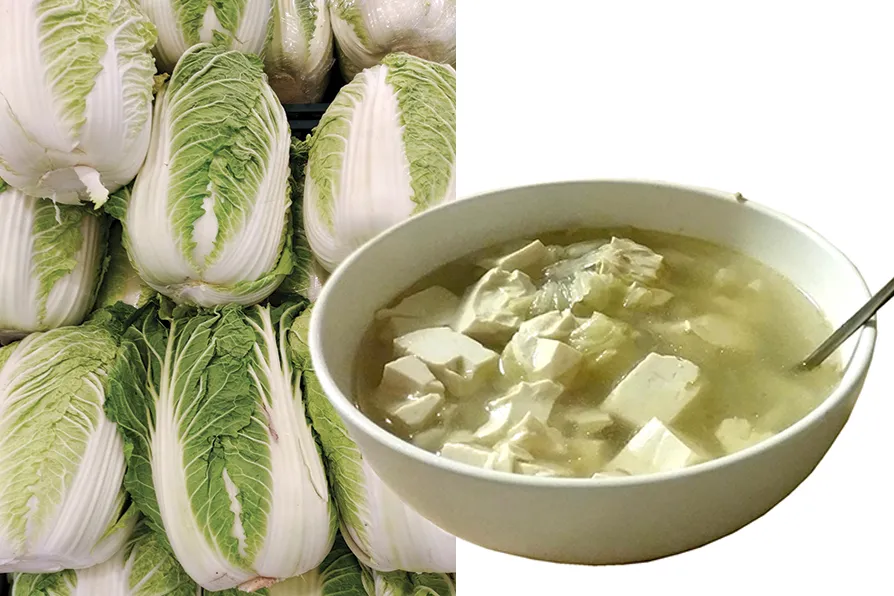RAMZY BAROUD offers six reasons why Netanyahu is prolonging conflict in the Middle East
MAT COWARD presents a peculiar cabbage that will only do its bodybuilding once the summer dies down

 (L to R) Wong Boks and a Chinese cabbage and tofu soup Pics (L to R): Bayartai/CC and NeoBatfreak/CC
(L to R) Wong Boks and a Chinese cabbage and tofu soup Pics (L to R): Bayartai/CC and NeoBatfreak/CC
Gardening
THE British name, Chinese cabbage, is a bit too generic and the US name, Napa cabbage, is rather too specific, so perhaps we should go with Wong Bok, which is how it’s often listed in seed catalogues these days.
We all know it when we see it, anyway: a stout, tightly-packed, barrel-shaped head of what looks like a cross between lettuce and cabbage, in shades of pale green, white and sometimes yellow. It’s used in this country as both lettuce and cabbage, quite apart from its indispensable role in so many East Asian dishes.
The most common reason for failure with what is, admittedly, never the easiest veg to grow, is sowing it in the spring, as you would with a western cabbage.
Wong Bok will tend to bolt, concentrating its energies on seed production rather than building up the bits we like to eat, in the event of hot weather, cold weather, or dry weather.
Given that it is, by weight, one of the world’s most common vegetables, it’s pretty fussy about its conditions.
To avoid bolting, the seeds are best sown in July and August, when summer has passed its mid-point, so that by the time the plants are in their main growing phase the days will be a little cooler but the nights will still be warm.
Chinese cabbage will generally tolerate light autumn frost, and doesn’t mind growing in partial shade.
It can be sown in situ, but is more reliable if started in modules for planting out about four to six weeks later.
During a rainy spell, slugs and snails will feast on direct-sown seedlings. Either way, you’re aiming for a final spacing between the plants of around 12 inches (30 cm).
Very heavy or very light soils are no use at all for this crop. If that’s all you’ve got available, you’ll be better off planting it in large pots of multi-purpose compost.
In the ground, it needs a rich, deep soil, with good drainage, containing plenty of organic matter, such as garden compost or manure.
Above all, the key to success with Wong Bok is stopping it drying out. It’s a fairly fast-growing vegetable, usually ready for harvest roughly 10 weeks after sowing, so it must have constant moisture to keep it going at that rate.
Its roots are unhelpfully shallow, meaning it can dry out quickly, so the old motto of watering “little and often” applies. The simplest rule to follow is to water frequently enough that the soil around the plant is never dry.
Mulching around the cabbages, to prevent evaporation, will help a lot.
I hope I’m not putting you off this tasty, crunchy, versatile vegetable, but I have to mention that birds, caterpillars and flea beetles can also cause problems. The only answer, if so, is to cover the plants in horticultural fleece or similar.
Wong Bok is ready to harvest when the “barrel” feels solid when squeezed quite firmly with both hands.

Commiserations if you failed this year, MAT COWARD offers six points which, if followed religiously, will ensure you succeed next year

MAT COWARD sings the praises of the Giant Winter’s full-depth, earthy and ferrous flavour perfect for rich meals in the dark months

MAT COWARD rises over such semantics to offer step by step, fool-proof cultivating tips











